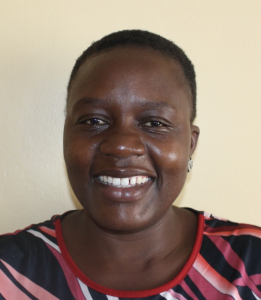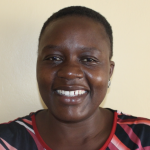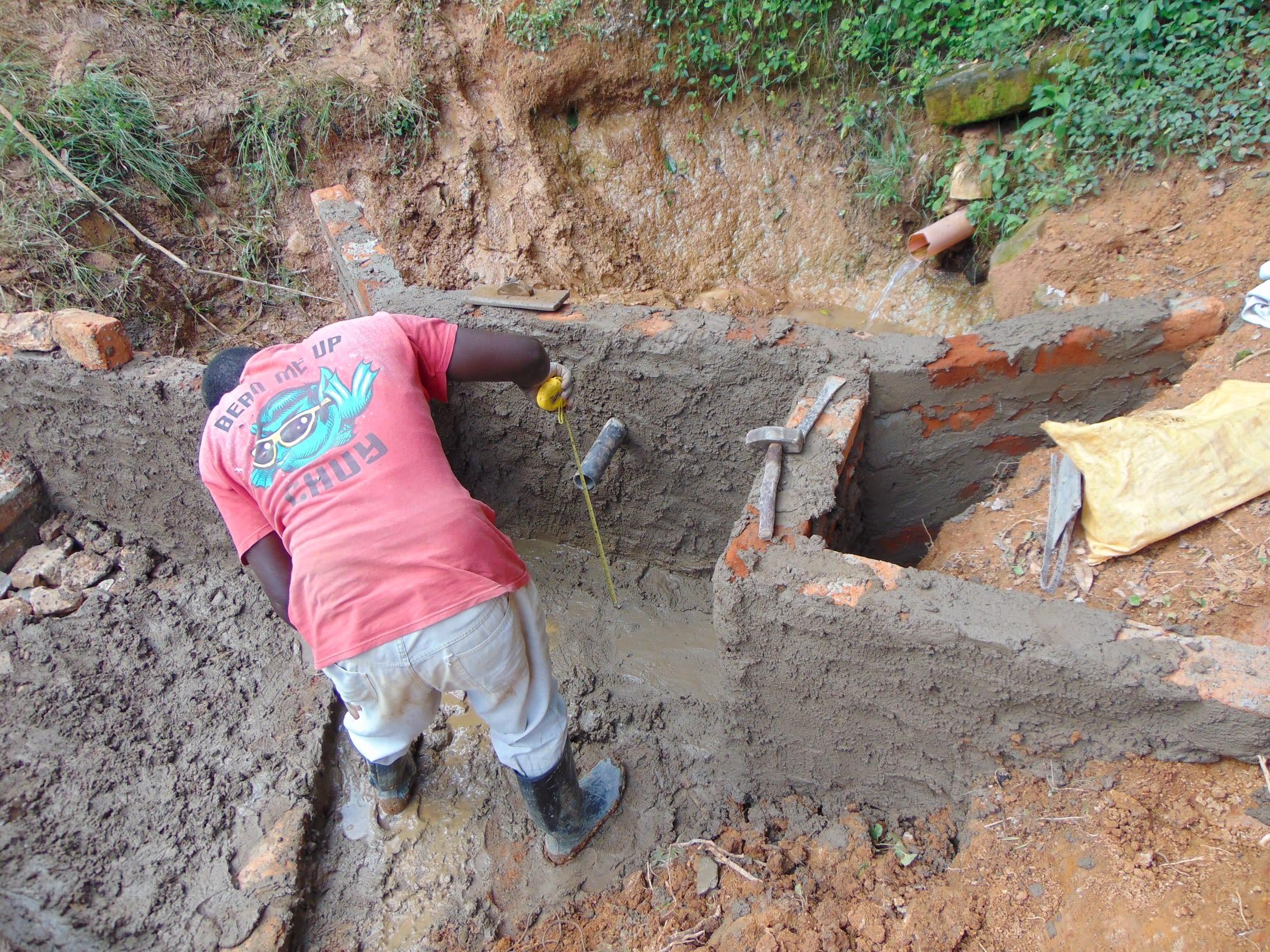The Shichebe area is rich in green vegetation. The roads leading here are not paved but they are well graded. There is a nearby shopping center that serves this community known as Tombo Market. Houses in Shichebe are both semi-permanent and permanent in design. Farming is the main livelihood here, with most people planting on a large scale maize, sugarcane, beans, and sweet potatoes. Others are small business owners and this ranges from running groceries, to retail shops, clothing shops, salons, and kinyozi (barbershops).
This community is known for coming together during social events like funerals, weddings, and for women's chamas (investment groups). The women of this community are Kabras, a Luhya tribe. Kabras women are known to be tough, no-nonsense, and very hard working. Most men outside of this community fear these women for their confidence.
Shichebe Spring is an unprotected spring that is the main water source for 450 people in Shichebe village. The spring is located on a gradual slope so whenever it rains, runoff carries eroded soil to the waterpoint, covering the source. This makes it difficult for the community members to fetch water, so they have to spend hours - and sometimes up to a whole day - trying to remove the soil.
"We have suffered for a very long time without clean water," said Emily Lihungu, a 52-year-old farmer and mother in this community.
"Whenever it rains, the surface runoff causes the walls of the spring to collapse. This soil falls in the spring water and since it's unprotected, the water gets contaminated and extremely dirty. As a mother, I wish to give my family safe food and water, but whenever the water gets contaminated I've no choice but to risk their health. We long for the day we shall drink clean and safe water."
As if the time lost at the spring due to digging out the eroded soil is not enough, after all the soil has been removed the water is completely muddy and the community members have to leave it overnight before they can access cleaner water in the morning. Sometimes, however, since they have no alternative water source, community members are forced to use the water as it is. Many other activities are delayed as a result of delayed water delivery, including children going to school, and adults going to the farm, work, market, and other social events.
"Our water gets dirty and contaminated with mud and during this period (the rainy season) we don't get clean water. We long to see our spring protected," said Elizabeth, a primary school-aged student in the community.
To aid in fetching water, the community installed a discharge pipe on the ground to facilitate drawing water. The pipe is held in place with only mud and rocks, and so it is often washed away. This pipe, however, is dirty and contaminated as a result of being fixed directly into the earth. In addition to the soil and dirty pipe that contaminate the water, pollutants including farm chemicals and animal waste are carried directly into the water point during the rains. Because it is open, animals can walk through the spring while drinking from it, leaving their waste behind as well.
The community reports constant outbreaks of diarrhea, stomachaches, typhoid, and headaches after consuming this spring water. The children also have constant coughs and diarrhea among families who depend on this spring. Families waste a lot of their financial resources trying to pay for medicine and hospital visits to treat their water-related illnesses. When sick, kids have to miss school and adults miss out on key productive time at work, at home, and on the farm.
What We Can Do:
Spring Protection
Protecting the spring will help provide access to cleaner and safer water and reduce the time people have to spend to fetch it. Construction will keep surface runoff and other contaminants out of the water. With the community’s high involvement in the process, there should be a good sense of responsibility and ownership for the new clean water source.
Fetching water is a task predominantly carried out by women and young girls. Protecting the spring and offering training and support will, therefore, help empower the female members of the community by freeing up more of their time and energy to engage and invest in income-generating activities and their education.
Training on Health, Hygiene, COVID-19, and More
To hold trainings during the pandemic, we work closely with both community leaders and the local government to approve small groups to attend training. We ask community leaders to invite a select yet representative group of people to attend training who will then act as ambassadors to the rest of the community to share what they learn. We also communicate our expectations of physical distancing and wearing masks for all who choose to attend.
The training will focus on improved hygiene, health, and sanitation habits in this community. We will also have a dedicated session on COVID-19 symptoms, transmission routes, and prevention best practices.
With the community’s input, we will identify key leverage points where they can alter their practices at the personal, household, and community levels to affect change. This training will help to ensure participants have the knowledge they need about healthy practices and their importance to make the most of their water point as soon as water is flowing.
Our team of facilitators will use a variety of methods to train community members. Some of these methods include participatory hygiene and sanitation transformation, asset-based community development, group discussions, handouts, and demonstrations at the spring.
One of the most important issues we plan to cover is the handling, storage, and treatment of water. Having a clean water source will be extremely helpful, but it is useless if water gets contaminated by the time it is consumed. We and the community strongly believe that all of these components will work together to improve living standards here, which will help to unlock the potential for these community members to live better, healthier lives.
We will then conduct a small series of follow-up trainings before transitioning to our regularly scheduled support visits throughout the year.
Training will result in the formation of a water user committee, elected by their peers, that will oversee the operations and maintenance of the spring. The committee will enforce proper behavior around the spring and delegate tasks that will help preserve the site, such as building a fence and digging proper drainage channels. The fence will keep out destructive animals and unwanted waste, and the drainage will keep the area’s mosquito population at a minimum.

 Protected Spring
Protected Spring
 Rehabilitation Project
Rehabilitation Project




































